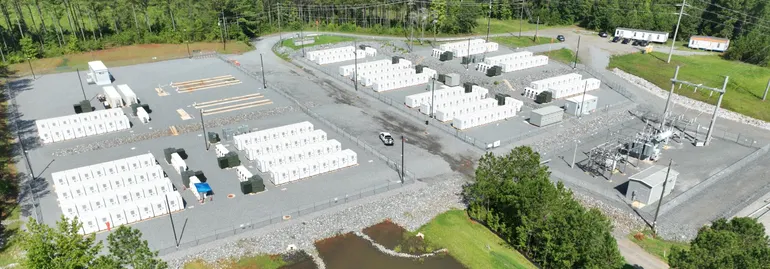Leveraging Industrial Energy Management System for a Sustainable & Resilient Growth – Hitachi Global

Report on Advanced Energy Management Systems and Sustainable Development Goals
Introduction
This report details the critical role of advanced industrial automation systems, specifically Supervisory Control and Data Acquisition (SCADA) and Energy Management Systems (EMS), in achieving global sustainability targets. The adoption of these technologies is essential for industries seeking to enhance operational efficiency while contributing directly to the United Nations Sustainable Development Goals (SDGs). The focus is on how centralized monitoring and control systems facilitate a transition towards green energy and a sustainable future.
Technological Framework: SCADA and EMS
Industries are increasingly leveraging SCADA systems to monitor and control entire plant operations from a centralized location. The modernization of this software is driven by the need for greater operational and environmental performance. Key benefits of upgrading these systems include:
- Increased operational efficiency
- Enhanced system interactivity and control
- Improved compliance with environmental and safety regulations
- Greater transparency across company operations
- A significant boost to Return on Investment (ROI)
Alignment with Sustainable Development Goals (SDGs)
The implementation of SCADA and EMS directly supports the achievement of several key SDGs by fostering responsible and efficient energy management.
- SDG 7: Affordable and Clean Energy: These systems are fundamental to managing high-voltage electrical grids efficiently. By ensuring system reliability and enabling real-time monitoring, they support the stable integration of renewable energy sources, making clean energy more accessible and reliable.
- SDG 9: Industry, Innovation, and Infrastructure: The deployment of advanced EMS and SCADA represents a significant innovation in industrial infrastructure. It promotes resilient, efficient, and sustainable industrial processes, which is a core target of this goal.
- SDG 11: Sustainable Cities and Communities: Safe and reliable operation of complex electrical systems from a centralized location is vital for urban infrastructure. This technology ensures a stable energy supply to busy, high-intensity communities, enhancing their sustainability and resilience.
- SDG 12: Responsible Consumption and Production: By providing real-time data and control, these systems empower industries to minimize energy waste, thereby promoting sustainable consumption and production patterns.
Case Study: Project Implementation and Outcomes
In a series of four collaborative projects, Hitachi Energy demonstrated the practical application of these principles by delivering integrated EMS and SCADA solutions. The projects yielded significant outcomes that advance both industrial performance and societal sustainability.
- Improved System Reliability: The systems enhanced the stability and reliability of high-voltage electrical infrastructure.
- Centralized Safety and Control: Safe operation of the entire electrical system was enabled from a single, centralized location.
- Promotion of Societal Sustainability: The implementation of real-time monitoring in complex and high-intensity environments directly contributed to a more sustainable energy framework for society at large.
- Facilitation of Energy Transition: These projects serve as a model for how technology, in partnership with customers, can accelerate the energy transition for future generations, aligning with global climate objectives.
Analysis of Sustainable Development Goals in the Article
1. Which SDGs are addressed or connected to the issues highlighted in the article?
-
SDG 7: Affordable and Clean Energy
The article’s central theme is “embracing green energy” and the “energy transition.” It discusses technologies like SCADA and Energy Management Systems (EMS) that are crucial for managing modern electrical grids, which increasingly incorporate renewable energy sources.
-
SDG 9: Industry, Innovation, and Infrastructure
The text focuses on upgrading industrial infrastructure with advanced technology. It highlights how industries are leveraging “SCADA automation” to “monitor and control the entire industrial plant,” thereby improving system reliability and efficiency, which aligns with building resilient infrastructure and promoting sustainable industrialization.
-
SDG 13: Climate Action
By facilitating the “energy transition” and the use of “green energy,” the technologies discussed are direct contributors to climate change mitigation. Improving the efficiency of industrial energy use is a key strategy for reducing greenhouse gas emissions.
2. What specific targets under those SDGs can be identified based on the article’s content?
-
Target 7.2: By 2030, increase substantially the share of renewable energy in the global energy mix.
- The article’s focus on “green energy” and the “energy transition” directly supports this target. Advanced management systems like SCADA and EMS are essential for integrating variable renewable energy sources into the grid reliably.
-
Target 7.3: By 2030, double the global rate of improvement in energy efficiency.
- The article explicitly states that businesses are upgrading their software to “increase efficiency.” The SCADA and EMS systems are designed to optimize energy consumption in industrial plants.
-
Target 9.4: By 2030, upgrade infrastructure and retrofit industries to make them sustainable, with increased resource-use efficiency and greater adoption of clean and environmentally sound technologies and industrial processes.
- The article describes exactly this process: industries adopting SCADA automation to improve control, “increase efficiency,” and manage “green energy,” which constitutes an upgrade of industrial processes with clean technology.
3. Are there any indicators mentioned or implied in the article that can be used to measure progress towards the identified targets?
- Increased Efficiency: The article explicitly mentions the goal to “increase efficiency.” This can be measured by tracking energy consumption per unit of industrial output before and after the implementation of SCADA/EMS systems.
- Return on Investment (ROI): The text notes that businesses upgrade to “boost Return on Investment (ROI).” This is a financial indicator that reflects the economic viability and efficiency gains from adopting the new technology.
- System Reliability: The article states that the technology helps in “improving system reliability.” This can be measured by indicators such as a reduction in downtime, fewer operational failures, or improved stability of the high-voltage electrical system.
- Adoption of Technology: The article mentions that “Hitachi Energy delivered Energy Management Systems (EMS) and SCADA” on “four different projects.” The number of industrial plants or projects adopting such advanced energy management technologies serves as a direct indicator of progress in upgrading infrastructure.
4. Summary Table of SDGs, Targets, and Indicators
| SDGs | Targets | Indicators (Implied or Mentioned in the Article) |
|---|---|---|
| SDG 7: Affordable and Clean Energy | 7.2: Increase the share of renewable energy. 7.3: Double the rate of improvement in energy efficiency. |
– Measurement of increased energy efficiency in industrial plants. – Improved system reliability for managing green energy sources. |
| SDG 9: Industry, Innovation, and Infrastructure | 9.4: Upgrade infrastructure and retrofit industries to make them sustainable and increase resource-use efficiency. | – Number of industrial projects adopting SCADA/EMS technology (e.g., “four different projects”). – Boost in Return on Investment (ROI) for companies upgrading their systems. |
| SDG 13: Climate Action | Integrate climate change measures into policies and planning (at a corporate/industrial level). | – Adoption of technologies that support the “energy transition” and “green energy.” |
Source: hitachi.com

What is Your Reaction?
 Like
0
Like
0
 Dislike
0
Dislike
0
 Love
0
Love
0
 Funny
0
Funny
0
 Angry
0
Angry
0
 Sad
0
Sad
0
 Wow
0
Wow
0
















































/environment-climate-change-and-health-(ech)/water-sanitation-hygiene-and-health-(wsh)/landfill-tuvalu-36092.tmb-1200v.jpg?sfvrsn=5c21fe40_1#)

.jpg.webp?itok=0ZsAnae9#)

























